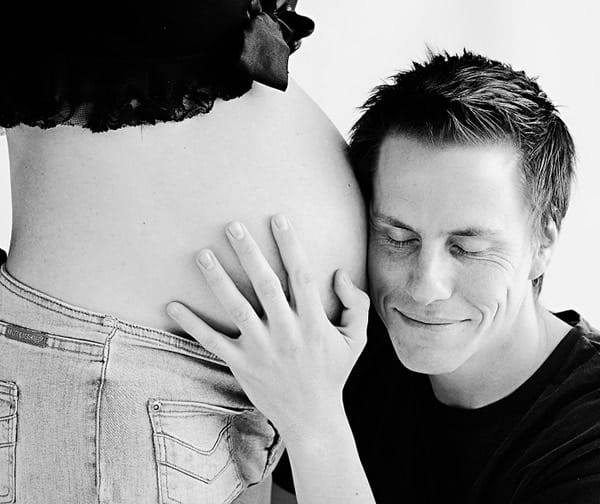
by Patricia Hughes
Preterm or premature labor affects about 12 percent of babies born each year in the United States, according to statistics from the March of Dimes. Preterm labor is classified as labor that begins at or before the 36th week of pregnancy. Most preterm births occur after 32 weeks, but 6% of all preterm births happen by the 28th week of pregnancy. Early detection is crucial for doctors to stop the labor or provide other potentially life saving treatments for the baby and mother.
There are some warning signs of preterm labor. Some things to watch for include:
Contractions that occur at least ten minutes apart can be a sign of early labor and can be mild enough in the beginning to be confused with Braxton Hicks contractions, or false labor. These contractions may or may not have regular intervals, but if you have having at least four or five an hour, call your doctor or midwife.
Cramping: The severity of cramping or pain in the abdomen can vary, depending on the individual. In many cases, this has been described as similar to the cramping experienced during a typical period.
Discharge: Most pregnant women experience some degree of discharge during their pregnancies. Any changes in vaginal discharge, particularly clear fluid, spotting or bleeding should be reported to your doctor or midwife immediately. Any fluid loss should be reported to your health care provider. Some women mistakenly think they will feel a gush of fluid if the membranes rupture, but it can be a slow trickle, if blocked by the baby’s head.
Infection: Certain infections, particularly Beta strep, urinary tract infections and sexually transmitted diseases can play a role in preterm birth. The best way to reduce this risk is to treat any infections, report symptoms to the doctor and for your health care provider to carefully monitor you for signs of preterm labor.
Low Back Pain: Lower back pain can be an early warning sign of preterm labor, as well as a discomfort of pregnancy. Sudden lower back pain should be reported to your doctor, since it can be a sign of early labor. What is sometimes mistaken for normal discomfort can actually be back labor.
Pressure: feeling pressure in the pelvis or the vagina can be a signal of early labor. Feeling the baby pressing down or feeling the baby dropping into the pelvis before the 36th week of pregnancy can be a sign things are happening too soon. Report these symptoms to your doctor or midwife.
If the baby’s movement changes pattern, particularly a noticeable reduction in movements, notify your doctor as well. Report any of these symptoms to your health care provider immediately. Don’t worry that you are overreacting. It’s better to overreact than to actually be in preterm labor and allow it to continue untreated.
Premature Labor Risk Factors
Although about 40 percent of preterm births have no explanation, there are some risk factors that make preterm labor more likely. Some of these factors involve the baby and others are maternal risk factors. Fetal conditions that increase the risk of a preterm labor, include having a multiple pregnancy, congenital abnormalities in the baby and fetal death often result in preterm labor. Women with multiple pregnancies, carrying babies with congenital abnormalities, those who have a history of preterm labor or other risk factors will have more monitoring of the fetus during the pregnancy.
There are certain factors that put a mother at increased risk of going into early labor. Some conditions that can increase the risk of preterm labor include abnormalities of the cervix or uterus, ruptured membranes, infections, abnormalities of the placenta, such as placental abruption or placenta previa. Certain lifestyle factors, such as drug abuse and maternal smoking also create a greater risk of early labor. Openly discuss any issues with your health care provider, so you can be more closely monitored and problems found earlier.
What to Do:
If you have symptoms of preterm labor, call your doctor or midwife immediately. You will most likely be sent to the labor and delivery unit of your hospital for a complete evaluation. The exact steps taken may vary, according to the circumstances, but some common evaluation tools include electronic fetal monitoring, examination of the cervix, testing discharge for the presence of amniotic fluid and ultrasound.
The March of Dimes offers this handy guide to the symptoms of preterm labor, treatments and what to do if you suspect you are experiencing preterm labor.
Biography
Patricia Hughes is a freelance writer and mother of four. Patricia has a Bachelor’s Degree in Elementary Education from Florida Atlantic University. She has written extensively on pregnancy, childbirth, parenting and breastfeeding. In addition, she has written about home décor and travel.












Add Comment